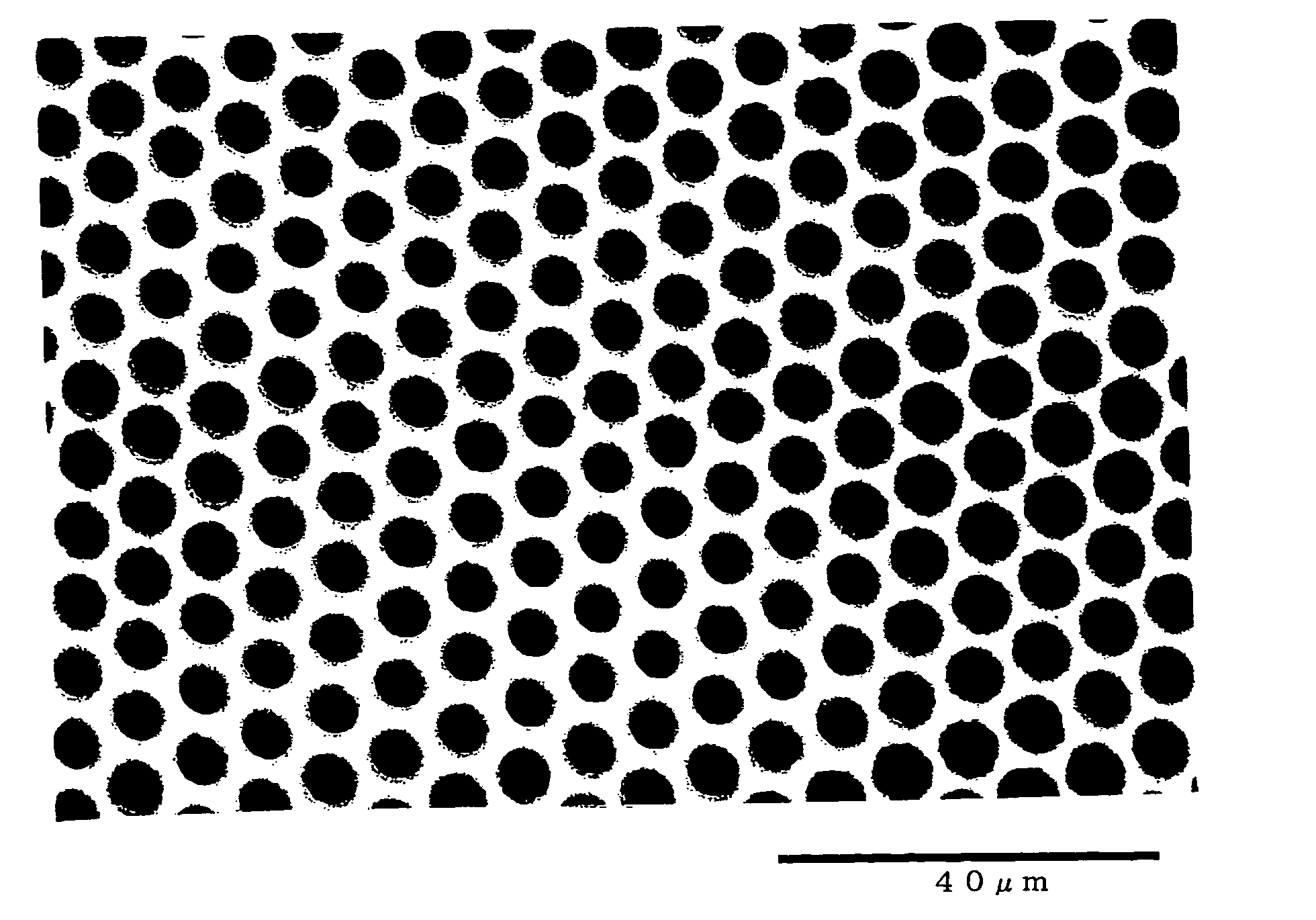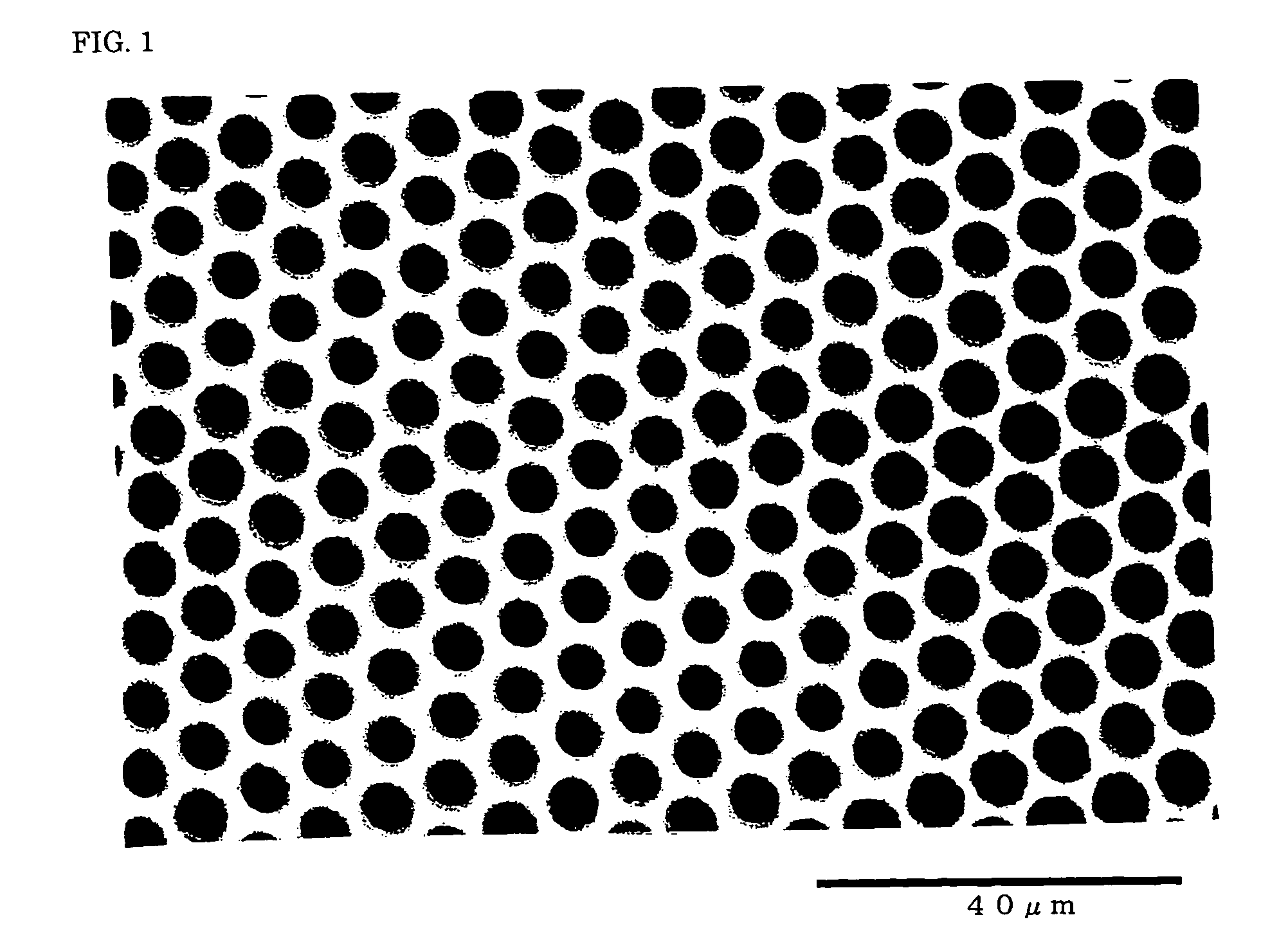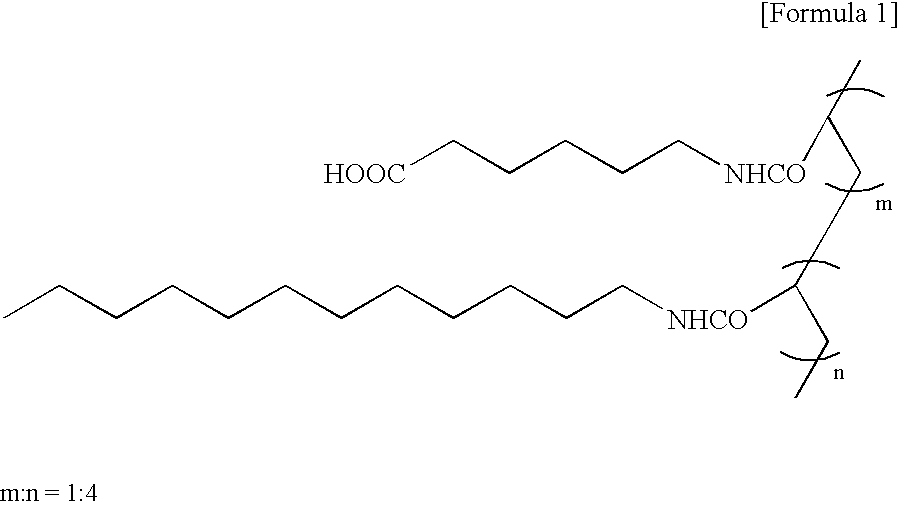Cell Growth Inhibiting Film, Medical Instrument and Digestive System Stent
a technology of cell growth and inhibiting film, which is applied in the direction of prosthesis, packaging foodstuffs, and packaged goods, etc., can solve the problems of imposing a large burden on the patient and serious symptoms such as pancreatitis, and achieve the effect of preventing side effects due to the physiologically active substan
- Summary
- Abstract
- Description
- Claims
- Application Information
AI Technical Summary
Benefits of technology
Problems solved by technology
Method used
Image
Examples
example 1
[0114] 6 ml of a solution (resin concentration: 0.27 wt %) prepared by dissolving poly(ε-caprolactone) (manufactured by Wako Pure Chemicals Co., Ltd., viscosity average molecular weight: 70,000) and a Cap resin (weight average molecular weight: 62,000, number average molecular weight: 21,000) in chloroform at a weight ratio of 10:1 was uniformly spread on a glass petri dish with a diameter of 10 cm.
[0115] Then, high-humidity air with a relative humidity of 70% was sprayed onto the liquid surface on the glass petri dish for one minute at a flow rate of 2 l / min in an atmosphere at a temperature of 23.0° C. and a relative humidity of 40% to obtain a film A with a thickness of 1 to 2 μm. The film A was observed using an optical microscope (“BH2” manufactured by Olympus Corporation) at a magnification of 100. It was confirmed that a porous honeycomb structure was formed in the film A. The pores of the porous structure had an average pore size of 3.5 μm and a coefficient of variation in ...
examples 2 and 3
[0116] In Examples 2 and 3, films B and C having a porous honeycomb structure were obtained in the same manner as in Example 1 except for changing the temperature of the atmosphere to 24.0° C. and 25.0° C., respectively.
[0117] Table 1 shows the thicknesses of the films B and C and the average pore size and the coefficient of variation in pore size of the pores of the porous structure.
examples 4 to 6
[0118] Films D, E, and F were respectively obtained in the same manner as in Examples 1, 2, and 3 except for using 1,2-polybutadiene (“RB820” manufactured by JSR Corporation) as the resin instead of poly(F-caprolactone).
[0119] As a result of observation using an optical microscope, it was confirmed that a porous honeycomb structure was formed in the films D to F. Table 1 shows the thicknesses of the films D to F and the average pore size and the coefficient of variation in pore size of the pores of the porous structure.
PUM
| Property | Measurement | Unit |
|---|---|---|
| pore size | aaaaa | aaaaa |
| pore size | aaaaa | aaaaa |
| pore size | aaaaa | aaaaa |
Abstract
Description
Claims
Application Information
 Login to View More
Login to View More - R&D
- Intellectual Property
- Life Sciences
- Materials
- Tech Scout
- Unparalleled Data Quality
- Higher Quality Content
- 60% Fewer Hallucinations
Browse by: Latest US Patents, China's latest patents, Technical Efficacy Thesaurus, Application Domain, Technology Topic, Popular Technical Reports.
© 2025 PatSnap. All rights reserved.Legal|Privacy policy|Modern Slavery Act Transparency Statement|Sitemap|About US| Contact US: help@patsnap.com



